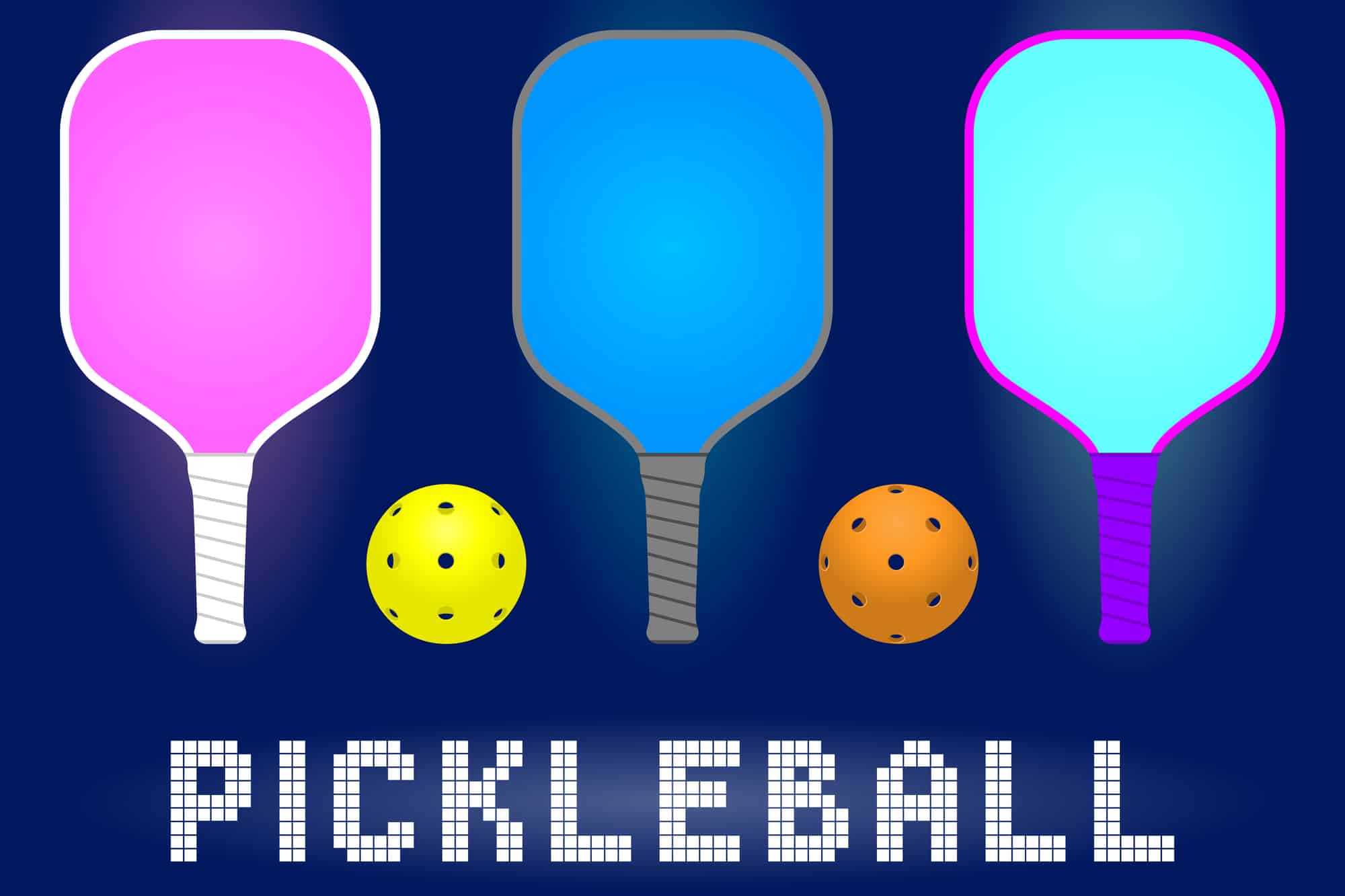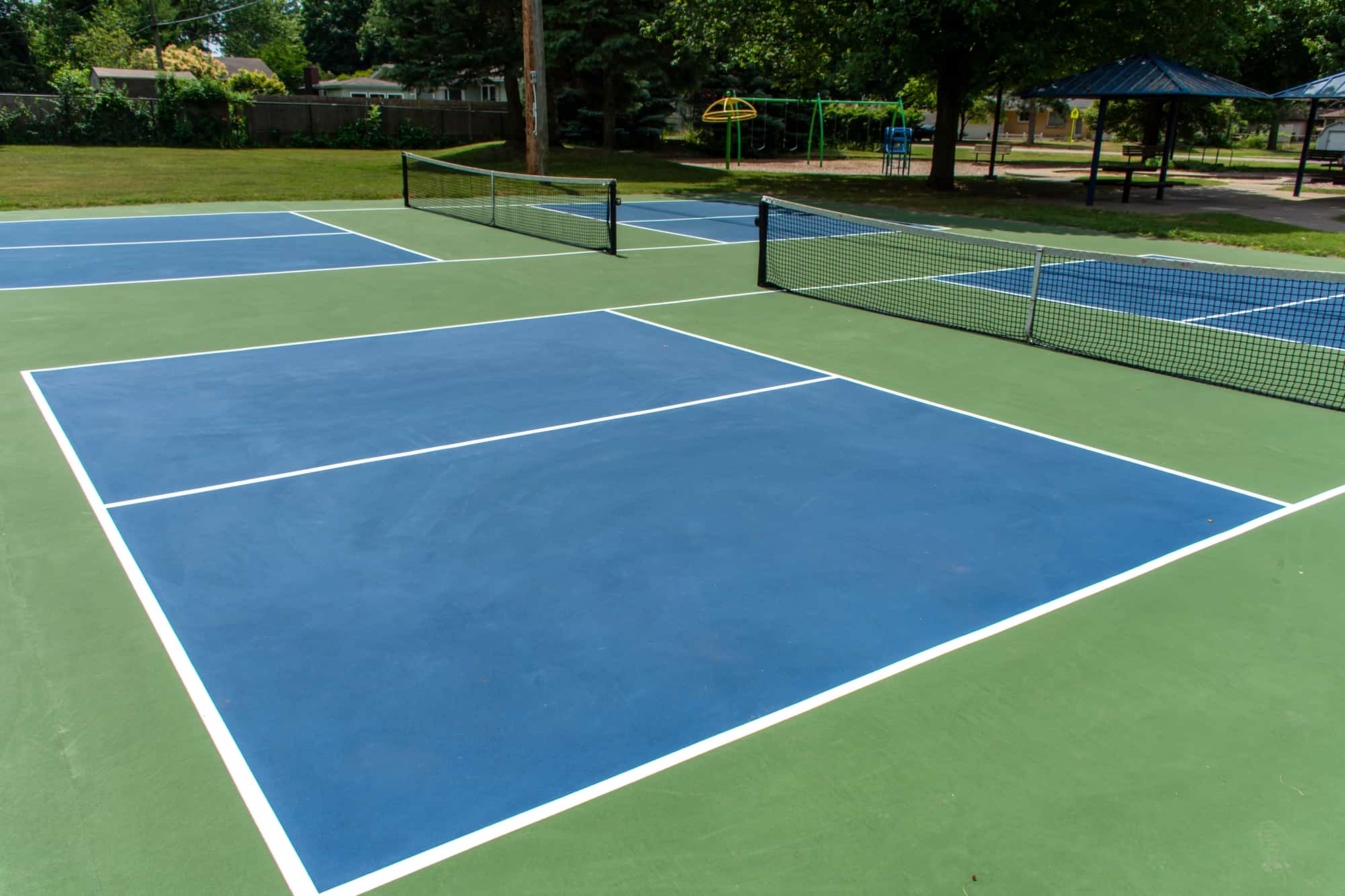Everything You Need to Know About Playing Pickle Ball
Pickleball is a unique sport that combines aspects of tennis, badminton and ping-pong. While originating in the U.S., it’s gaining in popularity around the world, with many European and Asian countries adopting the competitive sport.
So many people get hooked on this sport because it’s addicting to play once you know how. Read on to discover everything you need to know about how to play pickle ball.
Playing: Service Courts and Non-Volley Zones
Pickle ball is played indoors or out on badminton-sized courts with slightly modified tennis nets. The perfect pickle ball court measures 44 by 20 feet, with a 36-inch-high net dividing the court in half. This configuration allows for two 44-foot sidelines and two 20-foot baselines, and players can’t hit the ball outside these lines.
In the center of the court is the non-volley zone, also known as the “kitchen.” Player’s may not enter this zone to volley the ball. The remainder of the court is divided into four sections further divided by a service line that creates left and right service areas.
Teams: Serving Team and the Opposing Team
Just like in tennis, in a game of pickle ball there is a serving team and a receiving, or opposing team. When a team gets the opportunity to serve, the first serve is always performed by the player on the right side of the court, also known as the even side. After the very first serve of the game, each team gets to serve twice before the other team gets a chance to serve.
After a serve, the receiving player can return the ball. If the return is successful, the serving team must let the ball bounce before hitting it back to the opposing team. This continues until a point is scored or a fault occurs.

Serving in Pickleball
When it comes to learning how to play pickle ball, getting your serve down is crucial. According to pickleball rules, serves should be made diagonally. You’ll start with the right-hand service square and alternate after each serve. Your serve must clear the seven-foot non-volley zone at the front of your opponent’s court next to the net.
You always need to serve underhand. Start by holding your paddle below your waist and remember to keep both feet behind the back line of the court as you serve. Hit the ball into the air without bouncing it and continue to serve until there’s a fault on service, at which time service will be given to the opposing side.
Remember that your serve must completely clear the non-volley zone. Touching the line doesn’t count. You’re only allowed one serve attempt, unless the ball hits the net and bounces back into your court.
At the start of a new game, the first serving team can only get one fault before forfeiting service to the opposing team. If you’re on the receiving team and you win the serve, whichever player is in the right-hand court will always begin service.
Volleying in Pickleball
Essentially, you hit the ball back and forth, without letting it bounce, to volley. You need to keep both feet behind the non-volley zone line as you hit the ball. If you step over the line on your volley follow-through, you’ll receive a fault.
Types of Shots and Volleys
Whether you’re new to the game of pickle ball or you want to master it completely, you need to understand various common pickle ball shots and how to use them effectively. Remember that practice makes perfect! Try some of these shots in your next match to gain a winning edge over your opponents:
- Ground strokes: This shot refers to any hit you make after the ball has bounced once. It’s the most common pickleball shot and is essential for volleying.
- Dinks: Dinks are one of the most strategic pickle ball shots. It’s especially effective in doubles play, countering a less effective “hit it hard” strategy. The dink shot is executed simply from just a few inches behind your own non-volley zone line to land directly into the opposing team’s non-volley zone. Well-executed dinks force your opponent to let the ball bounce, making it harder for them to hit the ball back while keeping it in the court.
- Lobs: This infamous shot involves hitting the ball high in the air above the heads of your opponent or members of the opposing team. It often forces them to turn around quickly to intercept the ball in backcourt. Used effectively, lobs change the pace of the game, increasing the likelihood for your opponents to make mistakes. If you’re on the serving team, you’ll likely earn a point after a lob. If you’re on the receiving team, you’ll prevent the opposing team from scoring and—hopefully—force them to fault.
- Smash: The smash is a hard, overhand shot that’s directed downward into the opponent’s court. It’s usually effective as a return for an opponent’s high bounce, high return or lob shot. To use the smash shot effectively, aim for an open spot on the opponent’s court, or even at an opponent’s feet, so they can’t counter the fast, forceful shot.
- Drop Shots: This soft, delicate shot can be made from anywhere on the court, but it’s commonly executed from the baseline. While it’s one of the more difficult shots to master, it’s highly effective when it lands at or near the non-volley zone, since it’s less likely your opponent can return the ball, since they need to hit upward to get it back over the net.
The Double-Bounce Rule
All pickleball players should be aware of the double-bounce rule, also called the two-bounce rule. Under this regulation, each team must play their first shot off the bounce. The receiving team needs to let the serve bounce, while the opposing team must let the return bounce before they hit the ball back. After this occurs, both teams can either volley the ball or play it off the bounce.
Pickleball Faults (and How to Avoid Them)
Only the serving team can score in a pickle ball game, which means you want to have control over the pickle ball as much as possible during a pickle ball match. When you make a fault, the serve moves to the opposing team. Each of the faults described below can move the serve to the opposing team:
- If the ball touches the non-volley zone on the serve (including the line)
- If the serve or a returning volley is hit out of bounds (the line is playable)
- If the ball doesn’t clear the net (touching the net on the way over is playable)
- If the ball is volleyed before a bounce has occurred on each side
- Is the ball is volleyed from the non-volley zone

Scoring in Pickleball
As you’re learning how to play pickle ball, scoring can be one of the most difficult concepts to grasp. The main rule to remember is that only the serving team can score points. A player who’s serving will continue to serve until a fault is made by their team. If you’re playing a doubles match, each player keeps serving until their team makes a fault, and when a fault occurs, it’s called a Side Out.
When a point is scored by the serving team, the server moves to the left side of the court and serves again. Each time the receiving team fails to return the ball to the opponent’s side, or hits the ball out of bounds, the serving team receives a point. Also, keep in mind that a ball that hits a line is considered “in,” unlike in squash. Games are played to 11 points, but teams must win by two points.
Get Out There and Play Pickleball!
Pickle ball is a challenging game that’s fun to play one-on-one or in teams. Now that you know how to play pickle ball, all you need is the right gear and a few friends to take part in a competitive match! Remember to follow the rules and leave everything on the court to play at your best.
